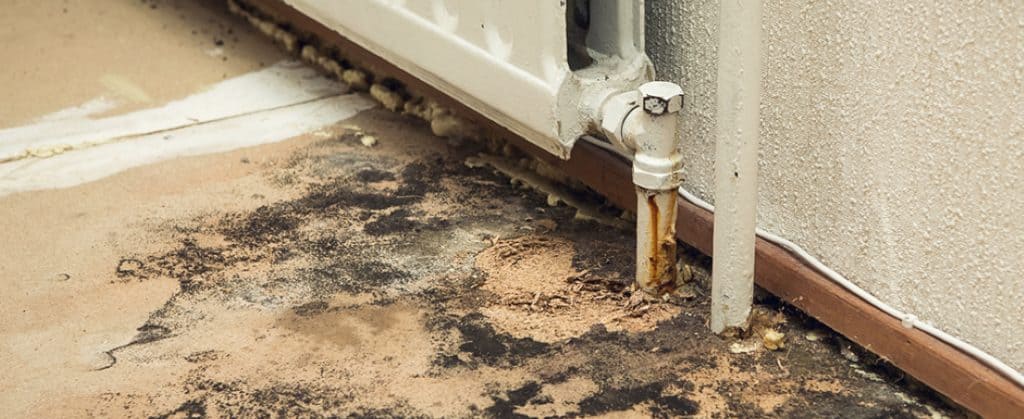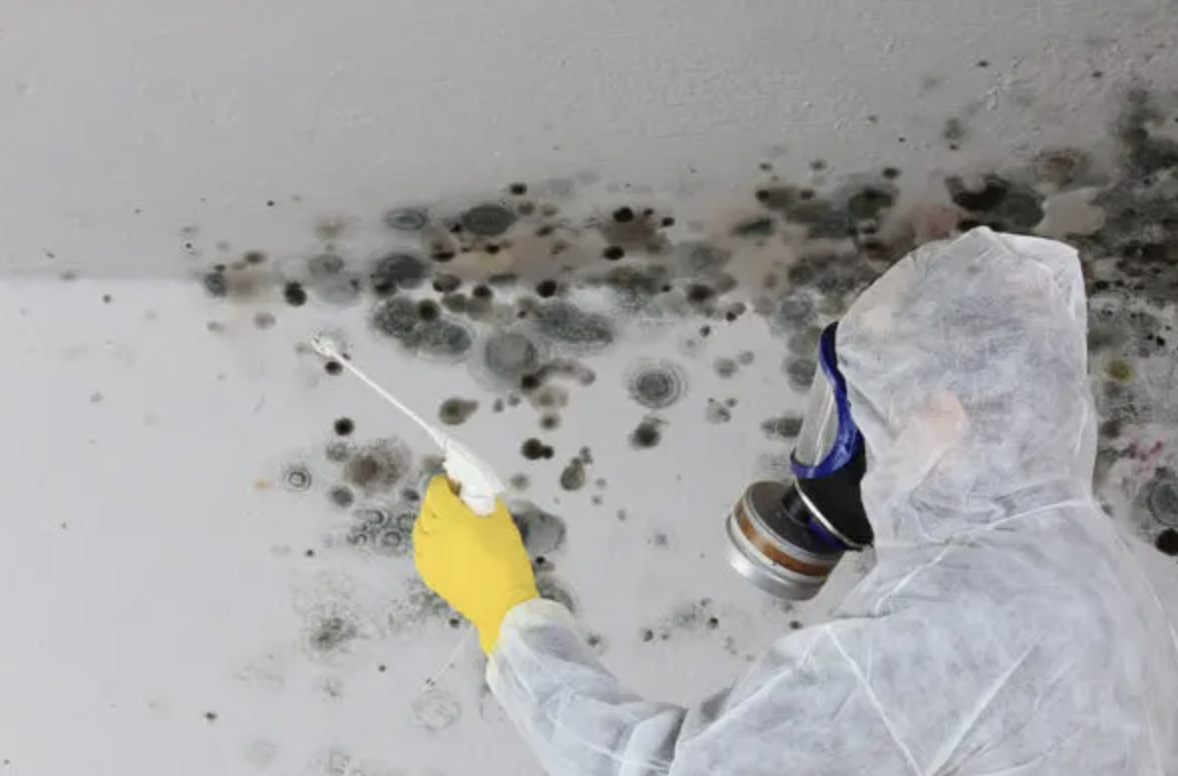Article by Joshua Kent
Moisture Master Pros OwnerMold damage can be a nightmare for homeowners. Not only is it unsightly and smelly, but it can also cause serious health problems and structural damage to your property. If you have mold in your home, you might be wondering if your homeowner’s insurance policy will cover the cost of remediation and removal. So, will my home insurance cover mold removal and remediation? The short answer is: it depends.
Does Homeowners Insurance Cover Mold Damage?
Mold damage can be a headache for any homeowner, and it can be costly to remove and can cause serious health problems for you and your loved ones. Whether your homeowners insurance covers the damage caused by mold is not that straightforward.
First, let’s talk about what your policy does cover.
Here are three scenarios where your insurance policy may cover mold damage or removal:
- Covered peril: If your mold damage results from a covered peril, such as a burst pipe or a storm, your insurance policy may cover the cost of remediation and removal. This is because the mold damage is a direct result of a sudden and accidental water damage that is protected by your policy.
- All-perils policy: If you have an all-perils policy, which provides coverage for any sudden and accidental events that cause damage to your home, you may be covered for mold damage caused by an event such as a fire or a burst pipe. This means that you may be covered even if the event itself did not directly cause the mold damage.
- Additional endorsements: Some insurance companies offer additional endorsements or riders that provide coverage for mold damage. These endorsements typically require an additional premium, but they can provide extra protection against mold damage caused by events not covered by your standard policy.
- Most standard homeowners insurance policies don’t cover mold damage caused by long-term neglect, humidity, or water leaks. However, some policies will accept a mold claim if a covered peril, such as a burst pipe or a storm, caused the damage. It’s essential to carefully review your policy’s terms and conditions to see what is covered and what is not.
If you’re dealing with mold damage, don’t panic! Take the time to review your insurance policy and coverage options. Then, contact us for a consultation. We’ll work with you to develop a customized plan that meets your specific needs and budget. Our goal is to provide you with the best possible service, so you can get back to enjoying your home without worrying about mold damage.
Is Your Water and Mold Damage Covered? Understanding Your Home Insurance

While standard policies don’t typically cover mold damage caused by long-term neglect, humidity, or water leaks, there are some instances where mold damage may be covered.
Storm Damage
Suppose your home suffers damage from a severe storm, such as heavy rain or flooding. In that case, your insurance policy may cover the cost of remediation and removal for any resulting mold growth. The mold growth would be considered a direct result of the covered peril, which is the storm damage.
Sewage Backup
If your home experiences a sewage backup, your insurance policy may cover the cost of remediation and removal for any resulting mold growth. The mold growth would be considered a direct result of the covered peril, which is the sewage backup.
Fire Damage
If your home experiences a fire, your insurance policy may cover the cost of remediation and removal for any resulting mold growth. The mold growth would be considered a direct result of the covered peril, which is the fire damage.
Air Conditioning, Air Duct, HVAC System Failure
Suppose your air conditioning, air duct system, or HVAC system fails and causes water damage that leads to mold growth. In that case, your insurance policy may cover the cost of remediation and removal. In such cases, the mold growth is often considered a direct result of the covered peril, which is the equipment failure.
To determine whether your insurance covers mold damage, it’s essential to carefully review your policy’s terms and conditions. Be sure to also contact your insurance company for clarification and guidance.
When Mold Strikes: Understanding When Homeowners Insurance Won’t Cover the Damage
While some instances of mold damage may be covered, there are several scenarios where insurance companies may deny coverage.
One common reason insurance companies may deny coverage is if the mold damage results from long-term neglect, such as failing to repair a leaky pipe or a roof. Insurance policies typically require homeowners to take reasonable steps to prevent damage. Neglecting to address issues that lead to mold damage can be seen as a failure to fulfill that responsibility.
Another reason insurance companies may deny coverage is if the mold damage is a result of gradual deterioration, such as high humidity levels or poor ventilation. Insurance policies typically only cover sudden and accidental events that cause damage to your home, and gradual deterioration is not considered an unexpected event.
Additionally, an insurance provider may deny coverage if the mold damage results from a lack of maintenance or improper construction. For example, if your home was built with inadequate ventilation or insulation, your insurance policy may not cover the cost of remediation and removal.
At Moisture Master Pros, we understand that dealing with mold damage can be overwhelming and stressful, especially if your insurance company denies coverage. That’s why we offer affordable and comprehensive mold remediation and removal services, regardless of your insurance coverage. Contact us today to learn more about our services and how we can help you deal with mold damage.
Extra Protection Against Mold: Exploring Supplemental Insurance Options
Supplemental insurance policies can provide additional protection against mold damage and other unexpected events that your standard homeowners insurance policy might not cover. These policies are designed to give you peace of mind and protect your home and finances from the costly effects of mold damage.
One type of supplemental insurance to consider is mold insurance. This type of policy provides mold coverage specifically for mold damage, including the cost of mold removal, remediation, and prevention. It can also cover the cost of relocating temporarily if your home becomes uninhabitable due to damage from mold. You can work with your insurance agent to see if they offer this specific coverage.
Another option to consider is a home warranty that covers mold damage. Home warranties typically cover the repair or replacement of major systems and appliances in your home, but some also include coverage for mold damage. Keep in mind that home warranties often have limits on coverage and exclusions, so it’s important to carefully review the policy terms, as they may limit mold coverage.
We understand that dealing with mold damage can be overwhelming and expensive. That’s why we recommend exploring all your options, including supplemental insurance policies.
How to Stop Mold Before It Starts in Your Home

Mold growth can be a nuisance for any homeowner, but did you know that preventing mold growth is possible? While mold is a naturally occurring fungus that is present almost everywhere, there are several steps you can take to reduce the risk of mold in your home. Here are some tips to help you stop mold before it starts:
- Control moisture levels: Mold thrives in damp areas and humid environments, so keeping moisture levels in check is essential. Fix any leaks or water damage promptly, keep humidity levels below 60%, and use exhaust fans or open windows when showering, cooking, or using the dishwasher.
- Improve ventilation: Proper ventilation is essential for preventing mold growth. Ensure your home has adequate ventilation in high-moisture areas such as bathrooms, kitchens, and laundry rooms. Consider installing a ventilation system if your home lacks proper ventilation.
- Regular cleaning: Regular cleaning can help prevent mold growth by removing any mold spores that may be present. Pay extra attention to high-moisture areas such as bathrooms and basements. Use a disinfectant cleaner to kill any existing mold spores and prevent new growth.
Following these tips can reduce the risk of mold growing in your home and protect your family’s health. If you discover mold growth, it’s important to address the problem promptly to prevent further damage. Contact us today to learn more about our services and how we can help you prevent mold growth in your home.
Why Choose Moisture Master Pros for Mold Remediation and Removal?
Whether or not your homeowners insurance company covers mold-related damage, getting it removed and remediated immediately is crucial to avoid further damage and health risks. That’s where Moisture Master Pros comes in. Here are some reasons why you should choose us:
- Experience and expertise: We have years of experience and training in mold remediation and removal. Our team of experts knows how to identify and remove mold safely and effectively.
- Advanced technology and equipment: We use state-of-the-art technology and equipment to detect and remove mold in even the most hard-to-reach areas. Our tools include thermal imaging cameras, moisture meters, and air scrubbers.
- Comprehensive services: We offer a wide range of services, including mold testing, removal, remediation, and prevention. We’ll work with you to develop a customized plan that meets your specific needs and budget.
- Competitive Pricing: We offer competitive pricing for our services and will provide you with a detailed estimate before we start any work.
- Customer satisfaction: We’re committed to providing the highest level of customer satisfaction. We’ll communicate with you throughout the process and ensure you’re completely satisfied with the results.
FAQs
Homeowners insurance may cover mold damage if the leak is from a covered peril, such as a burst pipe. However, most policies usually won’t cover mold unless it is a result of a covered water damage event.
If you find mold in your home, it’s important to first identify and address the source of moisture to prevent further growth. You may need to treat mold with professional remediation services, especially if it covers a large area or is black mold.
Some homeowners insurance policies may include mold removal coverage or an endorsement that expands coverage for mold damage. It’s best to review your policy or speak with your insurance agent for specific details.
If the flooding is covered under your home insurance policy, you may be able to file a mold claim related to the water damage. However, you may need separate flood insurance coverage for damages resulting from flooding.
Treating mold typically involves cleaning the affected areas with appropriate cleaning solutions, using a dehumidifier to reduce moisture, and making necessary repairs to prevent future leaks. In more severe cases, professional mold cleanup may be required.
Coverage for mold caused by water backups may vary by policy. Many homeowners insurance policies do not cover water damage from backups unless you have specific water backup coverage added to your policy.
Mold cleanup is not always covered. While some policies may provide coverage for mold removal, others may exclude it. It’s essential to read your policy carefully and understand your coverage for mold-related issues.
Policies usually won’t cover mold that develops due to neglect or lack of maintenance, such as mold caused by unresolved moisture issues. Always check the specific terms of your policy regarding mold coverage.


